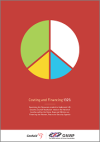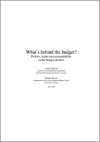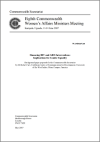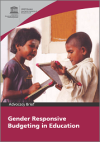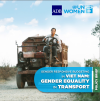FOUND 17
Examining the resources needed to implement Security Council Resolution 1325 at national level as well as the gains, gaps and glitches of financing the women peace and security agenda. Over the last decade the policy environment on women, peace and security has gained significant momentum.
Using country-level data, the paper estimates the costs of interventions aimed at promoting gender equality and women's empowerment in Bangladesh, Cambodia, Ghana, Tanzania, and Uganda. It then uses these estimates to calculate the costs of such interventions in other low-income countries.
Systematization of the project, "Gender Equity: Citizenship, Labor and Family and Fundar". The assessment was carried out in conjunction with the Ministry of Health, as part of a reflection process for introducing a gender perspective into the planning and budgeting of the health sector in Mexico.
This is an extensive summary of a report published in Swedish in December 2006, which was produced and written mainly by Elis Envall, Senior Advisor and Annika Eriksson, PhD at the National Board of Health and Welfare, Sweden.
Background paper prepared in May 2007 for the Commonwealth Secretariat by Dr Robert Carr, Caribbean Centre of Communication for Development, University of the West Indies, Mona Campus, Jamaica Commonwealth Secretariat.
This document, represents the gender analysis that was conducted on Tanzania's 2003-2004 National Budget.
This advocacy brief published in 2010 by UNESCO Asia and Pacific Regional Bureau for Education was written by Reina Ichii.
Transport is one of the most important aspects of national infrastructure and a key to gender equality. Women’s opportunities to access paid work are reduced when there is poor investment in gender
The Health Rights of Women Assessment Instrument (HeRWAI) is a tool developed by the Humanist Committee on Human Rights (HOM) in 2006 to enhance lobbying activities for better implementation of women's health rights.
